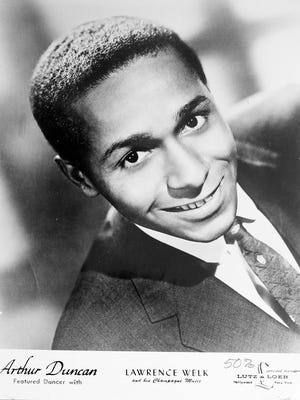
Fifteen-year-old Jahmari Rice loved all sports. He wrestled. He played basketball. But football was his passion, and he dreamed of playing in the NFL.
He had just started at a new school in Minnesota when he was fatally shot outside the building during lunch last week.
"Fighting for these babies, man, we are losing our babies," Jahmari's father, Cortez Rice, said through tears Wednesday at his son's funeral. "Our babies should not have to go through this. We shouldn’t have to go through this."
Jahmari is just one of the dozens of people fatally shot on school grounds this academic year. Four years after the deadliest high school shooting in U.S. history, the number of shootings on school grounds is reaching troubling new peaks, according to data from two groups that track the shootings.
There were at least 136 instances of gunfire on school grounds between Aug. 1 and Dec. 31, according to a new report Friday from the gun control advocacy group Everytown for Gun Safety. The figure is nearly four times the average for that period since Everytown began tracking gunfire on school grounds in 2013.
The shootings killed 26 people and wounded 96, marking the most recorded instances of gunfire and people shot in the five-month period since 2013, according to the report.
"This has been by far the most violent first half of the school year in recent history," said Shannon Watts, founder of Moms Demand Action, which is part of Everytown.
The new report comes nearly four years to the day after the mass shooting at Marjory Stoneman Douglas High in Parkland, Florida. On Valentine's Day in 2018, a former student walked into the school's freshman building, fired more than 100 rounds over the course of six minutes and killed 17 students and staff and wounded 17 others.

The gunman pleaded guilty last year to first-degree murder charges. His sentencing trial, which could result in the death penalty, has been repeatedly delayed.
"Four years since Parkland, it's still really difficult to see more school shootings and also gunfire generally on school grounds," said survivor Sari Kaufman, a volunteer leader with Students Demand Action and a member of the Everytown Survivor Network. "We haven't had a major piece of legislation on the federal level to help prevent the shootings and gunfire in general."
'Double trauma':Back to in-person learning, students confront school shootings once again
Kaufman, 19, is now studying political science at Yale University and plans to continue to advocate for gun control. She said she talks to friends from Marjory Stoneman Douglas High "every day" and has been FaceTiming and texting with them even more this week, as the anniversary approaches.
"We definitely cling to each other because we can't talk about it to other people," Kaufman said. "It's also been difficult because I think everyone copes differently."
Kaufman said some friends have been sharing memories of that day, including screenshots of the texts they sent to their parents.
"I think it helps them. It definitely re-traumatizes me. So it's a balance," Kaufman said.

Gun violence has risen across the U.S. during the coronavirus pandemic. More Americans died of gun-related injuries in 2020 than in any other year on record, according to Centers for Disease Control and Prevention data. More than half were deaths by suicide.
Children and teens have been particularly affected by the gun violence surge. In 2020, the numbers of kids shot and killed both increased by more than a third from the previous year, according to data from the Gun Violence Archive, a nonprofit research group that uses a combination of police statistics and media reports.
The surge continued into 2021, when more than 1,500 kids were killed and more than 4,000 injured, according to the archive. So far this year, more children and teens have been shot compared to the same time last year, according to the archive.
5,100 kids shot, 1,300 killed:Gun violence affecting children erupts during COVID-19
The new Everytown report focuses on gunfire at K-12 schools, colleges and universities, where gunfire includes unintentional discharges, arguments that escalate to gun violence, gun violence that comes onto school grounds, shootings at sporting events, random shootings and more.
Data from another research group reveals similar trends. The K-12 School Shooting Database found there have been at least 190 shooting incidents at K-12 schools since August.
The database, based at the Naval Postgraduate School’s Center for Homeland Defense and Security, documents every instance a gun is brandished or fired or a bullet hits school property for any reason.
"The number of incidents in this time period alone is four-to-eight times more than the full years in the database between 1970-2017," said lead researcher David Riedman.
During that timeframe, 171 people were killed or injured on school property, the youngest being six years old, Riedman said. Most of the victims were teachers or students, and some were non-students attending high school football or basketball games. Most of the shooters were students, a few were parents and one was a teacher.
Shootings in schools typically only capture national attention when they are mass shootings, often defined as four or more people killed, not including the shooter. The issue drew concern again in November, when a student at Oxford High School outside Detroit fatally shot four students and injured seven others.
'We can’t get that childhood we deserve':Parkland seniors' high school years bookended by tragedy, disarray
But many more school campuses have seen smaller-scale or targeted shootings inside or outside school buildings or after dismissal. Other incidents have happened on school grounds but have not involved members of the school community.
The incidents this year have happened across the country – in urban, suburban and rural areas – and no specific region has a higher concentration of incidents, Riedman said.
"This is truly a nationwide problem," Riedman said. "These shootings are representative of the increase in gun violence that is occurring across the country. Most of these incidents are simple disputes between students that escalate into a serious shooting because someone involved is carrying a gun."

In September, one student fatally shot another, 15-year-old William Chavis Renard Miller Jr., inside Mount Tabor High School in Winston-Salem, North Carolina. Nabria Varner, 15, was attending her second week of high school, finally back to in-person classes after remote learning, when she heard shots ring out in her building.
"She misses her friend. She misses Will every day," Sashua Patterson, Nabria's mother, said Thursday. "She's wanting to know why life is so short."
In Richfield, Minnesota, Jahmari was fatally shot outside South Education Center on Feb. 1. His aunt, Jasmine Hollins, 30, said she saw news of a shooting at school on TV and found out 20 minutes later that her nephew had been shot.
Hollins described Jahmari as a "sweet, funny" boy who "loved going to the gym," eating barbecue and getting new shoes. "He was intelligent. He had plans. And he was loved," Hollins said.
Jahmari grew up in Brooklyn Park, Minnesota, in a house with his father, aunt and great-grandmother, who all had a hand in raising him, Hollins said. She was 14 when Jahmari was born and often took him to go sledding and to the park, mall, movies and carnivals.
"They thought he was my son. That's how close I was to him. I’d seen every step of the way," Hollins said. "I just miss him being a little boy, you know, dancing, doing a little rapping. I just miss the little guy."
When Jahmari left for school that day, he told his great-grandmother "I love you" five times, Hollins said. The family is still unsure of what happened, she said.
"We buried our loved one yesterday. And we still don't know anything. So you just have to imagine how that feels," she said. "We want answers."
Parkland father:The lax disciplinary policies that caused Parkland could spread to your school
For her part, Kaufman said she's planning an event on her college campus Feb. 15 to commemorate her classmates and "talk about the importance of continuing to pass legislation" to prevent future shootings.
"On the four-year anniversary, it's nice to look back at the work that we've done that's continuing to help improve the safety of schools," Kaufman said. "There's been a lot of work that I've done with Students Demand Action and Everytown in the past four years with secure storage policies and red flag laws being passed at the state level."
Education on how to securely store firearms and clear guidelines for schools that choose to conduct active shooter drills are key to reducing shootings on school grounds, according to Everytown. The group released initial school safety recommendations for the Biden administration earlier this year.
Among other points, the recommendations direct the Department of Education to "develop a strategy to encourage school districts to send parents secure firearm storage information and raise awareness about the importance of secure storage in keeping schools safe."
The recommendations also "direct the Department of Justice to enforce the laws that prevent underage students from purchasing firearms and continue to call for Congressional action to close the loopholes in the background check law."
Everytown estimates about half of gun owners don't store their guns securely, and at least 5.4 million children live in a home with at least one unlocked and loaded firearm. About 80% of people who engaged in mass shootings at K-12 schools stole guns from family members, according to a recent report from the Justice Department's National Institute of Justice.
Source link










